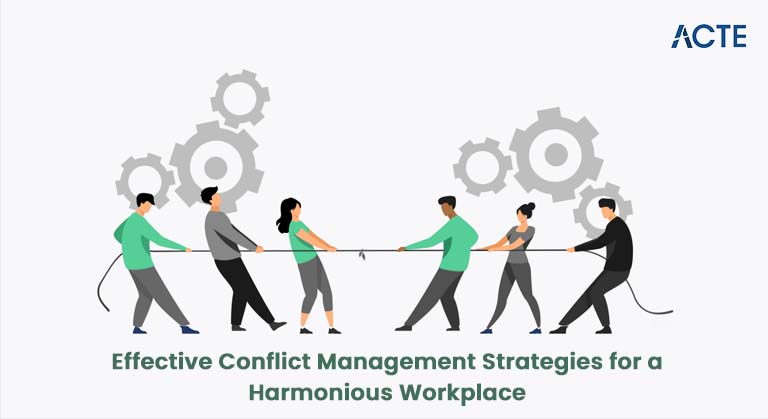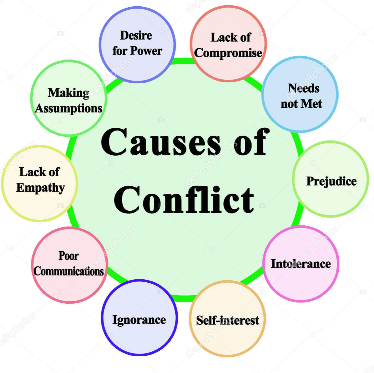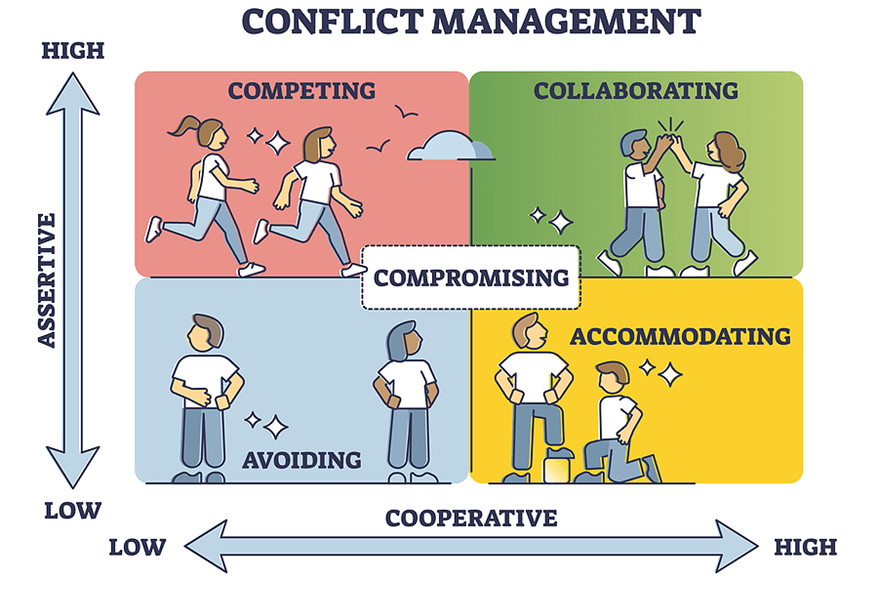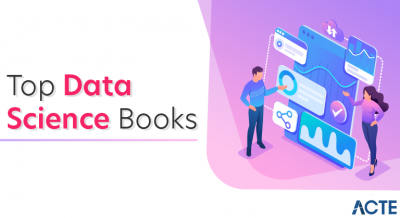
- Introduction to Conflict Management
- Types of Conflicts in the Workplace
- Causes of Conflict
- Conflict Resolution Techniques
- Communication Strategies
- Negotiation Skills
- Emotional Intelligence in Conflict Management
- Conflict Prevention Methods
- Case Studies on Conflict Resolution
- Best Practices for Conflict Resolution
Introduction to Conflict Management
Conflict management is the identification, management, and resolution of conflicts constructively and effectively. In the Data Science Course Training , conflict often arises due to differences in opinions, goals, values, or communication. Conflict management should minimize negative consequences and foster teamwork and productivity. It involves using skills, strategies, and techniques to deal with disputes fairly and objectively. Conflict can lead to innovative problem-solving, stronger relationships, and improved Team Conflicts performance if well managed.
Types of Workplace Conflicts
There can be a variety of types of resolving workplace conflicts. Interpersonal conflicts occur due to personality differences, communication failures, or individual differences. Intrapersonal conflicts are internal conflicts within an individual, typically caused by conflicting goals or values. Intergroup conflicts occur between departments or groups, typically as a result of competition or allocation of resources. Task conflicts arise due to differing priorities or methods in a project. Emotional differences or personal resentments lead to relationship conflicts, while leadership conflicts are due to differences in management approaches. It is essential to understand the types of conflicts in order to adopt proper solution measures.
Enhance your knowledge in Data Science. Join this Data Science Online Course now.
Causes of Conflict
- There are several reasons for conflicts in the workplace. One common cause is terrible communication, such as unclear directions or misinterpretation.
- Employee values and beliefs SQL Intersec conflict can lead to disputes. Ambiguous roles and responsibilities tend to create misunderstandings.
- Lack of resources, such as a limited budget or acknowledgment, can lead to competition. Personality clashes based on different temperaments or work styles also generate conflict.
- Disputes regarding powers of decision-making or influence are another source of tension. Unrealistic expectations by members or management can also lead to frustration and conflicts.

Conflict Resolution Techniques
- There are several techniques employed for resolving workplace conflicts effectively. In cooperation, the parties meet and decide on a solution, promoting win-win outcomes. Compromise requires sacrifices from both sides to reach an intermediary position. Avoidance occurs when the conflict is avoided or postponed, which suits minor or short-term conflict.
- Accommodation happens when a party sacrifices for Round off Formula in Excel to be at peace. A party attempts to dominate while competing, primarily used in matters involving high consequences.
- Mediation is where an impartial third party facilitates discussions to allow both parties to agree. Arbitration is when a third party makes a binding decision, often used in legal or contractual disagreements.
- Emotional intelligence (EI) is one of the key elements of effective conflict management. Self-awareness allows individuals to recognize and control their feelings when there are conflicts.
- Self-regulation helps control emotional reactions and stay composed. Empathy enables one to observe and consider other individuals’ emotions and develop empathy. Good social skills help a person communicate well and develop good relations.
- In disagreements, de-escalation Resolution Techniques such as a soothing voice and empathy defuse the tension. Data vs Information with high emotional intelligence resolve disagreements more with kindness, patience, and diplomacy, resulting in better outcomes.
- Case studies in real-life scenarios emphasize Conflict resolution training techniques that work. A disagreement between two departments regarding the allocation of resources at a technology firm was solved by implementing routine inter-department meetings, encouraging transparency.
- In a shop, an intra-personal conflict among workers was resolved through communication training and mediation, resulting in enhanced cooperation. In a healthcare facility, ongoing staff conflicts were minimized using a formal Conflict resolution training process with established guidelines.
- These examples show how formal conflict management Resolution Techniques enhance cooperation and organizational harmony. Coding Required for Data Science tools facilitate conflict management. HR software systems such as BambooHR and Gusto assist in monitoring and recording employee disputes. Mediation systems such as Modria and FairClaims enable online dispute resolution.
- Communication systems like Slack and Microsoft Team Conflicts ensure open communication, minimizing misunderstandings. Employee feedback systems such as SurveyMonkey and Officevibe collect feedback to avoid Negotiation Skills.
- Conflict resolution apps such as BetterHelp provide mediation and counseling assistance. These tools automate conflict resolution processes and encourage effective dispute management.
Enhance your knowledge in Data Science. Join this Data Science Online Course now.
Communication Strategies
Effective communication is critical in conflict resolution. Active listening, which involves paying complete attention to the speaker, allows one to understand their perspective. Clear and concise expression provides for effective communication of messages. By open-ended questions, dialogue, and weighing issues, open-mindedness is promoted. Through nonverbal communication, e.g., maintaining eye contact and favorable postures, confidence is encouraged. Data Extraction Tools of empathy in appreciating the emotions of the opposing party generates goodwill positive feedback rather than criticism guarantees that the information flow is resolving workplace-oriented. Respectful and effective communication promotes openness and alleviates tensions.
Negotiation Skills
Negotiation necessitates conflict resolution. Effective negotiation requires a lot of preparation, including gathering information, establishing goals, and setting objectives. Active listening allows the concerns of both parties to be understood. Problem-solving ability allows for finding creative and practical solutions. Emotional control enables one to remain calm when negotiating. Data Science Course Training allows one to express their needs in a firm but non-confrontational way. Compromise and flexibility are critical factors to ensure mutually acceptable solutions—functional skills in Negotiation Skills aid in resolving disagreements effectively while supporting professional relationships.
Ready to excel in Data Science? Enroll in ACTE’s Data Science Master Program Training Course and begin your journey today!
Handling Team Conflict
Team conflict management is central to maintaining productivity and unity. Establishing definitive roles and expectations prevents misinterpretation. Establishing open communications allows team members to express grievances freely. Stimulating teamwork and team-building helps build trust and collaboration intervention and mediation before conflicts forestall escalation. Excel Sheet Protection various opinions within the team reduces biases and promotes inclusivity. Conflict resolution training equips employees with the ability to manage conflicts effectively. Resolving disputes promptly creates a harmonious and cohesive working culture.

Emotional Intelligence in Conflict Management
Conflict Prevention Methods
Prevention of conflict is as crucial as conflict resolution. Clear resolving workplace policies and guidelines ensure roles, responsibilities, and expectations are well understood. Having open channels of communication ensures employees’ freedom to raise concerns. Offering conflict resolution training equips staff with practical problem-solving skills. Ensuring teamwork through Team Conflicts strengthens bonds and reduces the likelihood of conflicts. Feedback mechanisms often allow problems to be settled routinely before they erupt. Putting staff well-being on top also relieves tension, which could lead to events. Preventative measures generate a positive and friendly working atmosphere.
Are you getting ready for your Data Science interview? Check out our blog on Data Science Interview Questions and Answers!
Case Studies on Conflict Resolution
Best Practices for Conflict Resolution
Organizations must adopt best practices to manage conflicts effectively. Early resolution of disputes avoids escalation. The remaining objective ensures that everyone is treated justly. Encouraging cooperation and compromise results in win-win situations. Recording resolutions provides a model for Data Science Course Training conflicts. Encouraging respect and belongingness promotes a healthy work environment. Conflict management training supplied at regular intervals improves the conflict-handling skills of employees. By adopting these best practices, organizations can create a healthy work environment with few conflicts.





